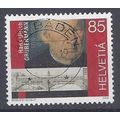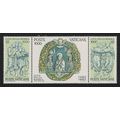Bird - Pheasant - Dixon Collectacard postcard c.1970s
- Condition : Used
- Dispatch : 2 Days
- Brand : None
- ID# : 136308699
- Quantity : 1 item
- Views : 254
- Location : United Kingdom

- Seller : justthebook (+1703)
- Barcode : None
- Start : Sun 11 Jan 2015 11:32:38 (BST)
- Close : Run Until Sold
- Remain : Run Until Sold
More Listings from This Seller view all
Seller's Description
- Postcard
- Picture / Image: Pheasant (Phasianus colchicus)
- Publisher: J Arthur Dixon (Collectacard) KFB 25612
- Postally used: no
- Stamp: n/a
- Postmark(s): n/a
- Sent to: n/a
- Notes / condition:
Please ask if you need any other information and I will do the best I can to answer.
Image may be low res for illustrative purposes - if you need a higher definition image then please contact me and I may be able to send one. No cards have been trimmed (unless stated).
------------------------------------------------
Postage & Packing:
Postage and packing charge should be showing for your location (contact if not sure).
No additional charges for more than one postcard. You can buy as many postcards from me as you like and you will just pay the fee above once. Please wait for combined invoice. (If buying postcards with other things such as books, please contact or wait for invoice before paying).
Payment Methods:
UK - PayPal, Cheque (from UK bank) or postal order
Outside UK: PayPal ONLY (unless otherwise stated) please. NO non-UK currency checks or money orders (sorry).
NOTE: All postcards are sent in brand new stiffened envelopes which I have bought for the task. These are specially made to protect postcards and you may be able to re-use them. In addition there are other costs to sending so the above charge is not just for the stamp!
I will give a full refund if you are not fully satisfied with the postcard.
----------------------------------------------
Text from the free encyclopedia WIKIPEDIA may appear below to give a little background information (internal links may not work) :
*************
Pheasants refer to several genera within the subfamily Phasianinae, of the family Phasianidae in the order Galliformes.
Pheasants are characterised by strong sexual dimorphism, males being highly ornate with bright colours and adornments such as wattles and long tails. Males are usually larger than females and have longer tails. Males play a part in rearing the young. Pheasants typically eat seeds and some insects.
The best-known is the Common Pheasant, which is widespread throughout the world in introduced feral populations and in farm operations. Various other pheasant species are popular in aviaries, such as the Golden Pheasant (Chrysolophus pictus).
The common pheasant (Phasianus colchicus), is a bird in the pheasant family (Phasianidae). It is native to Asia and has been widely introduced elsewhere as a game bird. In parts of its range, namely in places where none of its relatives occur such as in Europe (where it is naturalized), it is simply known as the ""pheasant"". Ring-necked Pheasant is both the name used for the species as a whole in North America and also the collective name for a number of subspecies and their intergrades which have white neck rings.
The word pheasant is derived from the ancient town of Phasis, the predecessor of the modern port city of Poti in Western Georgia.
It is a well-known gamebird, among those of more than regional importance perhaps the most widespread and ancient one in the whole world. The Common Pheasant is one of the world's most hunted birds;[2] it has been introduced for that purpose to many regions, and is also common on game farms where it is commercially bred. Ring-necked Pheasants in particular are commonly bred and were introduced to many parts of the world; the game farm stock, though no distinct breeds have been developed yet, can be considered semi-domesticated. The Ring-necked Pheasant is the state bird of South Dakota, one of only three U.S. state birds that is not a species native to the United States.
The Green Pheasant (P. versicolor) of Japan is sometimes considered a subspecies of the Common Pheasant. Though the species produce fertile hybrids wherever they coexist, this is simply a typical feature among fowl (Galloanseres), in which postzygotic isolating mechanisms are slight compared to most other birds. The species apparently have somewhat different ecological requirements and at least in its typical habitat, the Green Pheasant outcompetes the Common Pheasant. The introduction of the latter to Japan has therefore largely failed.
type=printed
animal subject=bird
period=post-war (1945-present)
postage condition=unposted
number of items=single
size=continental/ modern (150x100 mm)
Listing Information
| Listing Type | Gallery Listing |
| Listing ID# | 136308699 |
| Start Time | Sun 11 Jan 2015 11:32:38 (BST) |
| Close Time | Run Until Sold |
| Starting Bid | Fixed Price (no bidding) |
| Item Condition | Used |
| Bids | 0 |
| Views | 254 |
| Dispatch Time | 2 Days |
| Quantity | 1 |
| Location | United Kingdom |
| Auto Extend | No |



 for 1 item(s)
for 1 item(s)














